Common data loss problems of QNAP NAS
In general, QNAP NAS appliances have a reputation for having great adjustability, advanced features and reliable performance. Still, particular problems can be encountered during their operation that may hamper access to the files stored on the device or bring on massive data loss. Here you can find an overview of issues that are the most widespread among these units. The overall peculiarities of QNAP NAS units, their data organization principles and the process of data recovery are further described in the respective articles.
Human error
In most instances, human mistakes or careless actions become the reason for the missing data. The Network Recycle Bin may keep unintentionally removed files for some time. However, this feature applies only to a set of supported protocols, such as Samba, AFP, FTP, and QNAP File Station. Thus, it won’t of any help when other means are used. Apart from accidental deletion of files, shared folders, volumes or storage pools, users may mishandle the device or mess up with its configuration, for instance, when replacing drives in the storage or changing the RAID type. Although QNAP NAS usually allows for non-destructive online expansion and RAID migration, such operations are still risky and may lead to severe corruption, for instance, when a wrong drive is taken out or further RAID rebuild is not performed correctly.
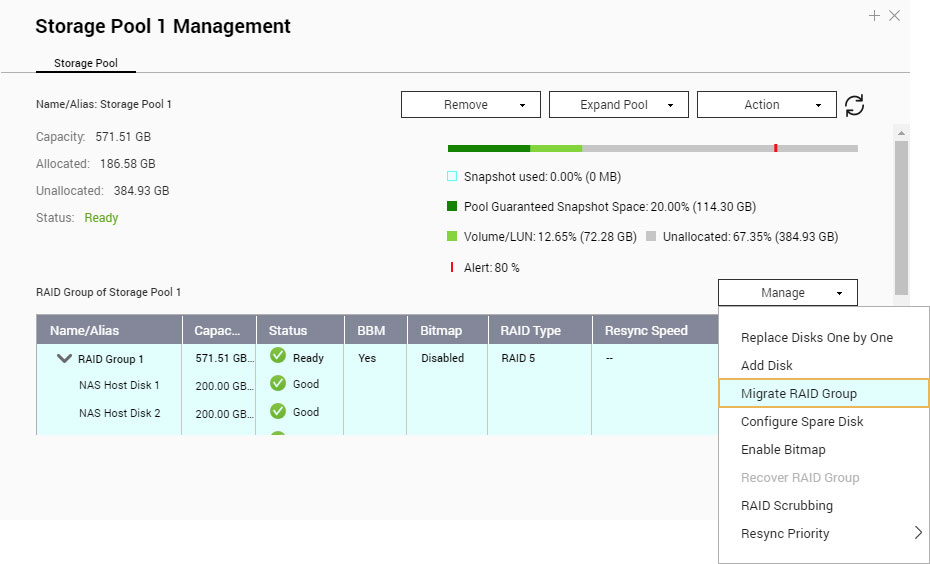
Pic. 1. Reconfiguration of RAID on QNAP NAS.
Moreover, with several options for resetting the QNAP device, it is quite easy to make an error and reformat or reinitialize the storage instead of a simple settings reset.
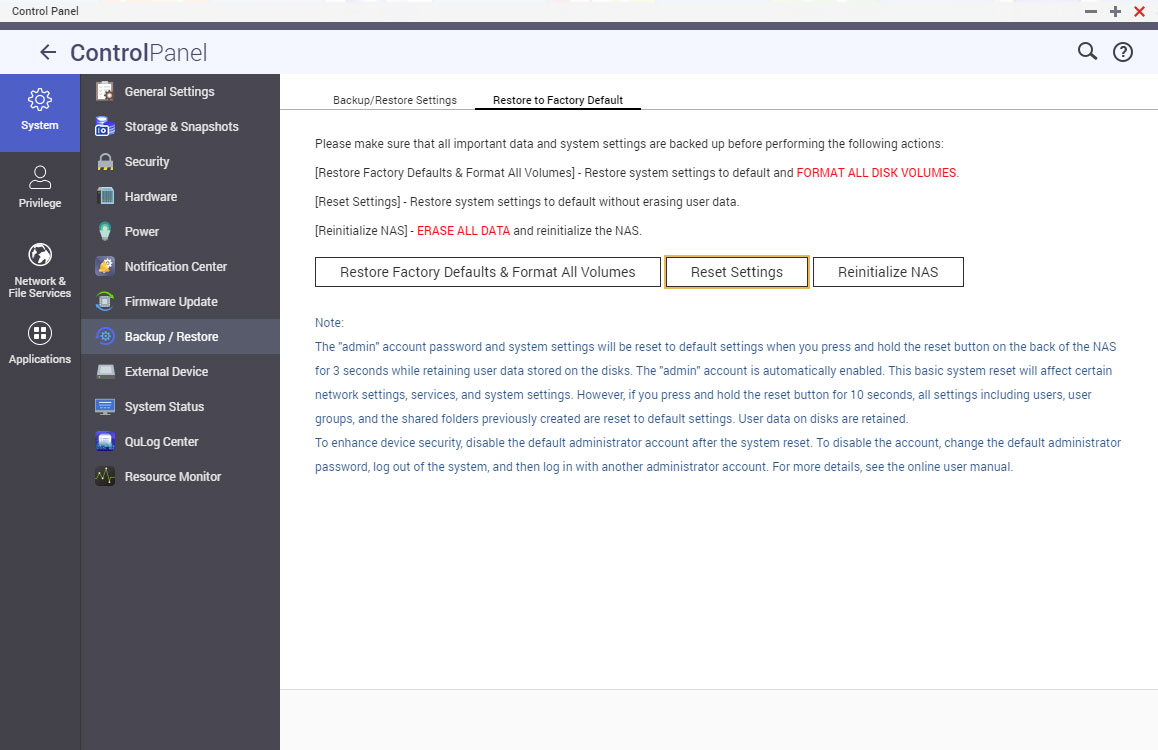
Pic. 2. QNAP NAS reset.
Failed RAID rebuild
After any manipulations with the RAID configuration of the NAS appliance, including the replacement of a defective drive in a degraded array, it must be rebuilt properly for its further usage. The procedure is usually initiated automatically by QNAP. But even when everything is done right, incidents do come to pass occasionally, like a sudden power outage or a faulty sector, that can interrupt the procedure and damage the entire setup. Also, blank data instead of the existing one may be copied to the new healthy drive.
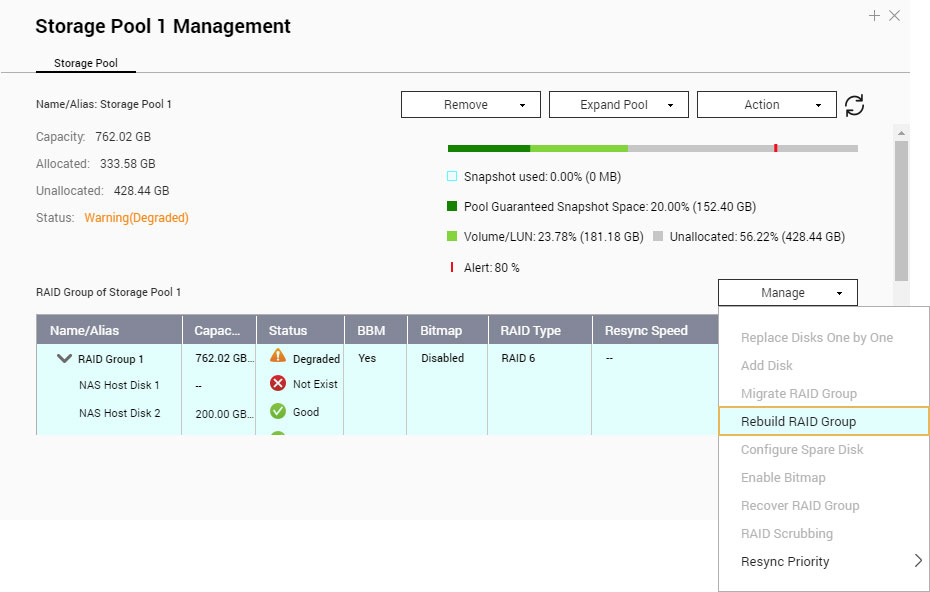
Pic. 3. RAID rebuild on QNAP NAS.
Ransomware attack
Hackers have repeatedly aimed QNAP NAS devices, exploiting their security vulnerabilities. The most notable attacks so far have been performed by Qlocker and Deadbolt. The ransomware manages to obtain an excessive level of permissions on devices with direct connection to the internet and encrypt user files using the default 7-Zip utility. Having completed the process, it deletes the original data and leaves a note demanding a ransom to get the locked files decrypted. All in all, if nothing is written to the NAS after the accident, the fact the criminals simply delete the original files leaves certain possibilities for their recovery.
QNAP firmware issues
Installing updates onto the NAS device is an important part of its maintenance, as they often address various QNAP security weaknesses. Yet, if the power goes off or a drive crashes in the process, the firmware may become corrupted, and the whole storage becomes inaccessible. In addition, it’s important to ensure that the chosen firmware version is suitable for your NAS model, as compatibility issues may also result in data loss. But even when everything seems to go smoothly, certain QNAP models may lose their settings after a reboot for some unknown reasons. In this case, the device shows up as if it was not configured, while its drives are detected as invalid. There are also have been update instances that simply prevent the whole system from booting.
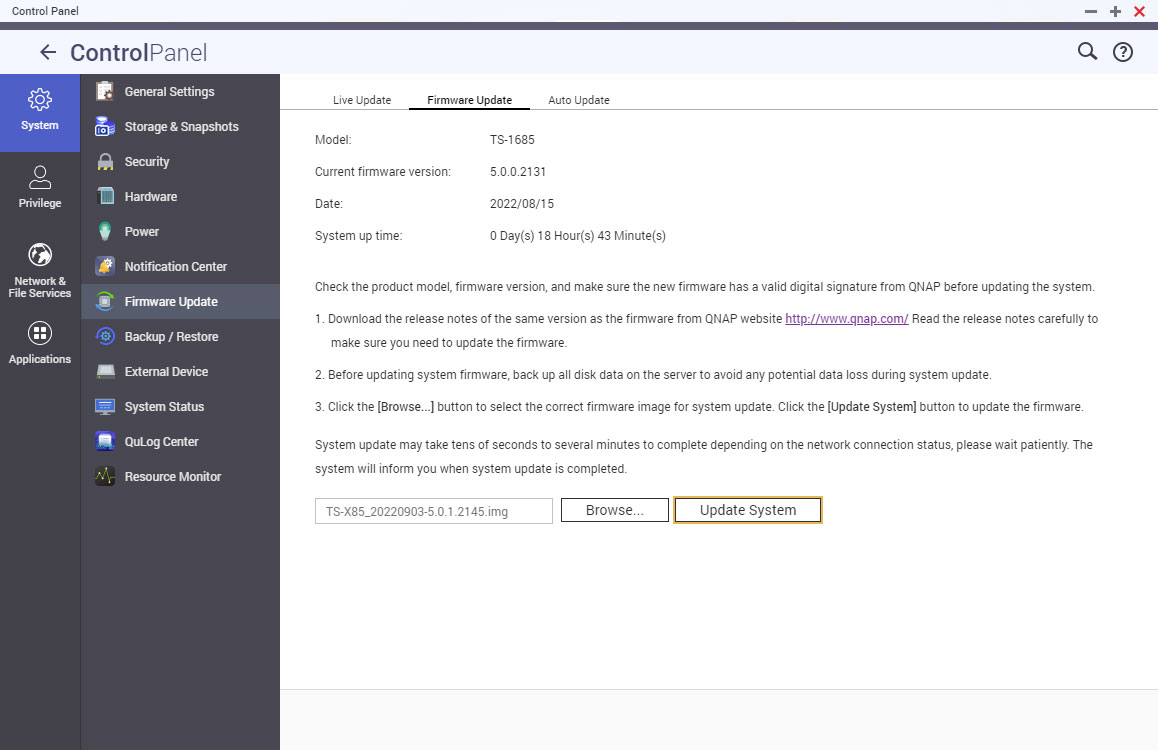
Pic. 5. Firmware update on QNAP NAS.
RAID configuration issues
The RAID configuration records can get corrupted or lost due to various causes, from power cuts or improper shutdowns to bugs within the NAS OS. In this event, all the data stored within the RAID volume becomes out of reach till proper reconstruction of the array and further recovery.
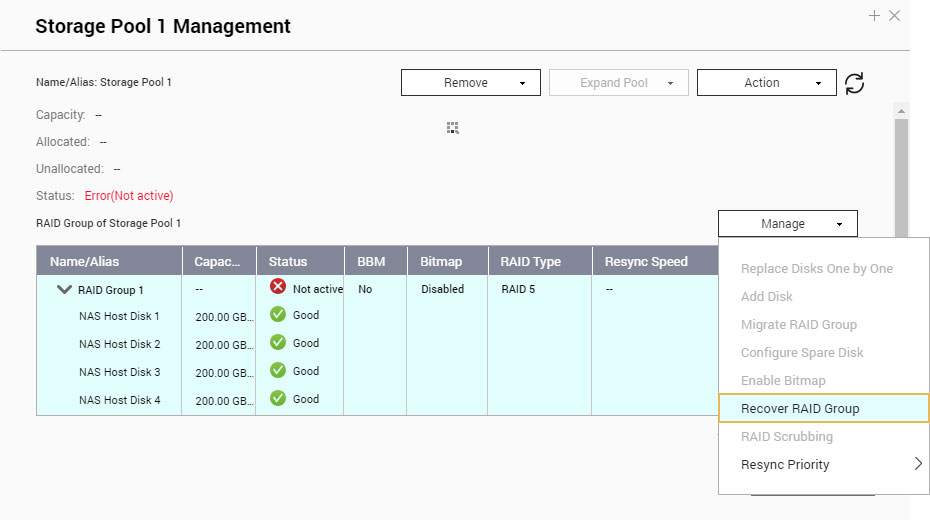
Pic. 6. Lost RAID configuration on QNAP NAS.
Drive failure
Most RAID setups can compensate for this kind of failure and make it possible for the NAS to keep operating. Yet, continued usage of the system in a degraded mode puts the rest of the drives under additional pressure. Subsequent drive failures are likely to occur under such circumstances, and will put down the whole array, unless you have some complex configuration capable of withstanding simultaneous failures. Also, a drive’s breakdown can be induced by physical damage, overheating, power issues or simply natural wear and tear.
Faulty drive
Some QNAP models encounter issues when operating in a degraded mode. If one of the remaining drives has bad sectors, the device may freeze, being unable to read from any of them, and doesn’t allow replacing the broken digital medium and rebuilding the array. The only way out in this case is to create bit-by-bit copies of the functioning drives onto new ones and insert them into the system. Once there are no defective sectors, the rebuild usually proceeds normally.
Malfunction of the NAS hardware
Similar to a computer, NAS consists of multiple hardware parts. When one of them doesn’t operate correctly or fails, for instance, a PSU or motherboard, this may result in a total collapse of the system and may even damage the user data it contains.
To obtain more information about QNAP NAS units, learn their data organization principles and familiarize yourself with the process of data recovery on QNAP NAS, please refer to the corresponding article.
Last update: September 27, 2022
